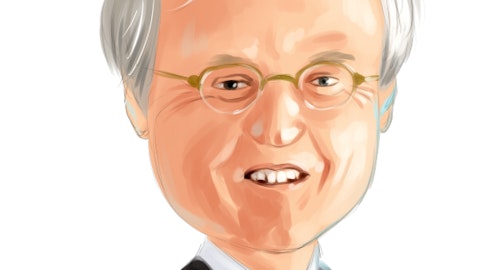Now in terms of the trend and acceleration, that’s something that we’ve talked about internally a lot on how should the sequencing be as you progress through the year and unfortunately, when you look at the first-half of the last three years, it’s been significantly disported by COVID. So it’s really difficult to say what a normal sequential trend would look like going from Q1 to Q2. And then you layer on some of the new products that we’ve launched in the last two years, that makes it even a little bit more difficult to say what the trending would look like. But like Laura said, we expect Q1 to be at about 30% growth year-over-year. Seasonally, you think Q2 is a little bit higher than that. Q3, we think will be more flattish and then you have sort of that Q4 ramp again.
And we think that’s the same trajectory you’ll see now.
Drew Ranieri: Got it. And then CapEx for the year?
Anshul Maheshwari: I would say from a CapEx perspective, the trend should be very similar to what you saw last year from a CapEx spend perspective because we’ll still continue to introduce more TORQ trays, but the focus on continuing to put out more Granite trays is going to be key for us to be able to capture the opportunity Laura talked about.
Drew Ranieri: Thanks for taking the questions.
Operator: Thank you. Our next question comes from the line of David Saxon with Needham & Company. Your line is open.
David Saxon: Hi, good afternoon and thanks for taking the questions. Maybe I’ll start on active surgeons, really strong into the year. Obviously, maybe I was wondering what your expectations are for 2023 in terms of active surgeon count? And then I think you said in the past, the quarterly average procedures per doc is in the 3 to 4 range. So I would love to hear where you think that could go over the next 12 to 24 months as you see some pull-through across the portfolio?
Anshul Maheshwari: Yes, David, happy to take that question. In terms of active surgeon growth, again, we’ve had eight quarters of double-digit growth. So I feel really good about it. Coming into this year, our expectation is growth in the mid-teens range at the end of Q4 2023 when you compare it to Q4 of 2022. Just to give you points of reference there. And if you think about the guidance range of 17 to 19, the delta of the guidance range versus that surgeon base would come from increase in productivity. We have better control on making sure we are reaching out to surgeons, creating them and getting them to first case. And then the sales team works really closely with the surgeons to get them to do repeat cases. But that’s why we focus more on how many surgeons can retrain and get the first case.
But with the broader portfolio, we expect that the number of procedures where we think about adult the 4 million SI joint fusion, because even the limited time period that we’ve been doing adult deformity as an example for 2022 of the surgeons that did an adult deformity procedure, also then an SI joint fusion procedure. So there is low-hanging fruit there that we can go after with this existing surgeon base and stop having them diagnose patients and postpone SI fusion procedures as well. But we want to be conservative on sort of that density per surgeon at this point.
David Saxon: Okay. That’s super helpful. And then maybe I just wanted to follow up on the gross margin guidance. Anshul, I think in the script, you said gross margin stabilized at that 80%. So does that mean you’re exiting the year at 80%? Or is that a full-year guide kind of implying you’re exiting slightly below that? And thanks so much for taking the questions.
Anshul Maheshwari: I’m glad you caught that word stabilized, right. So our expectation is similar to what you saw in 2022, the gross margin will end the year at around that 80% mark, because we will continue to roll trays out. And then we expect it to stabilize at that 80% level, which, again, look, they’re industry-leading, gross margins is a huge competitive differentiator for us. So we will continue to work hard to maintain those gross margins going forward. And there are a couple of things that will play out as you get beyond 2023 from a gross margin perspective. One is, when you launch a product, you see the market with significant capacity to be able to capitalize on the demand, and we’ve done that with TORQ starting in 2021.
We’re starting to do that with Granite in 2022. And what you have is a roll-off effect, right? So some of the older trays roll off, the newer trees that come on are more replacement capacity. So you have some stabilization on gross margin there. That’s number one. Number two is as these products gain scale in the market, you start seeing the cost per implant potentially also improving over time, right? So we haven’t taken that into account yet because it’s still early for both those products.
David Saxon: Okay, super helpful. Thanks for taking the questions.





